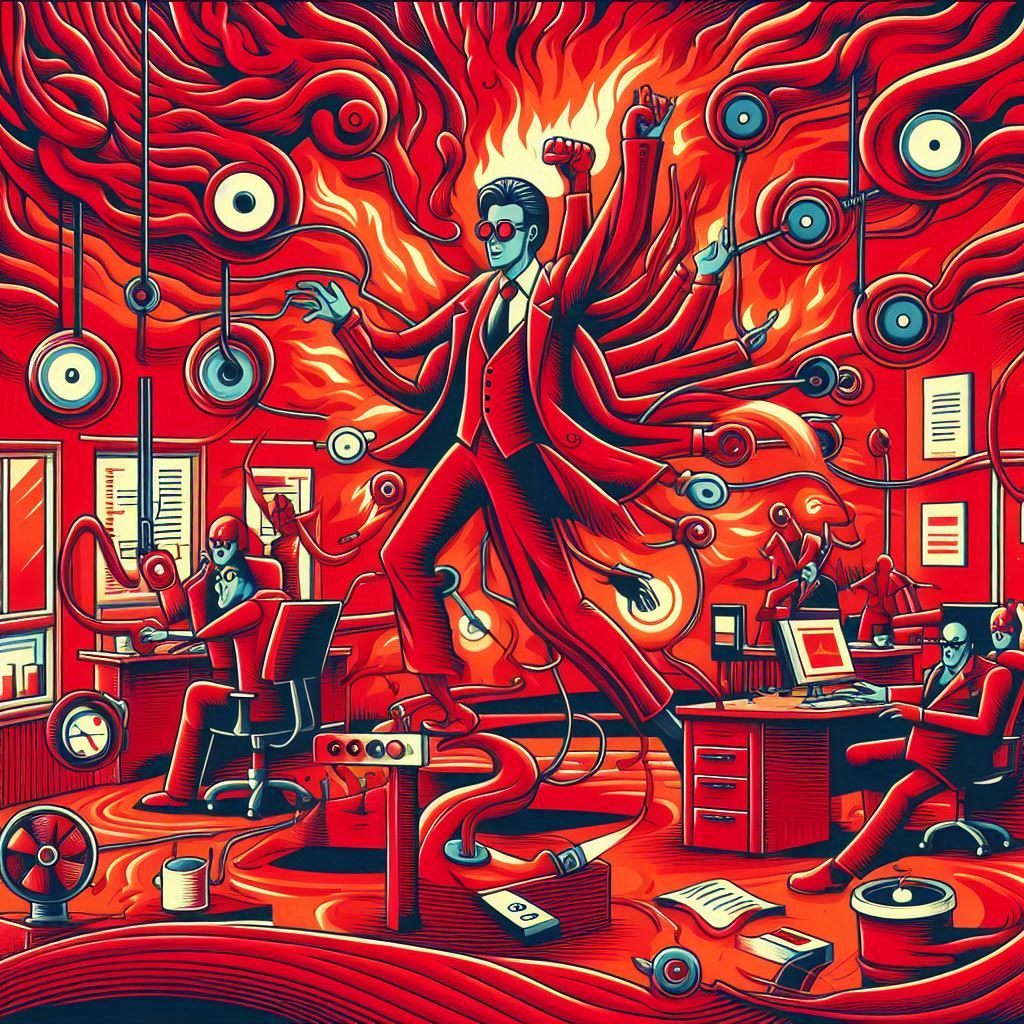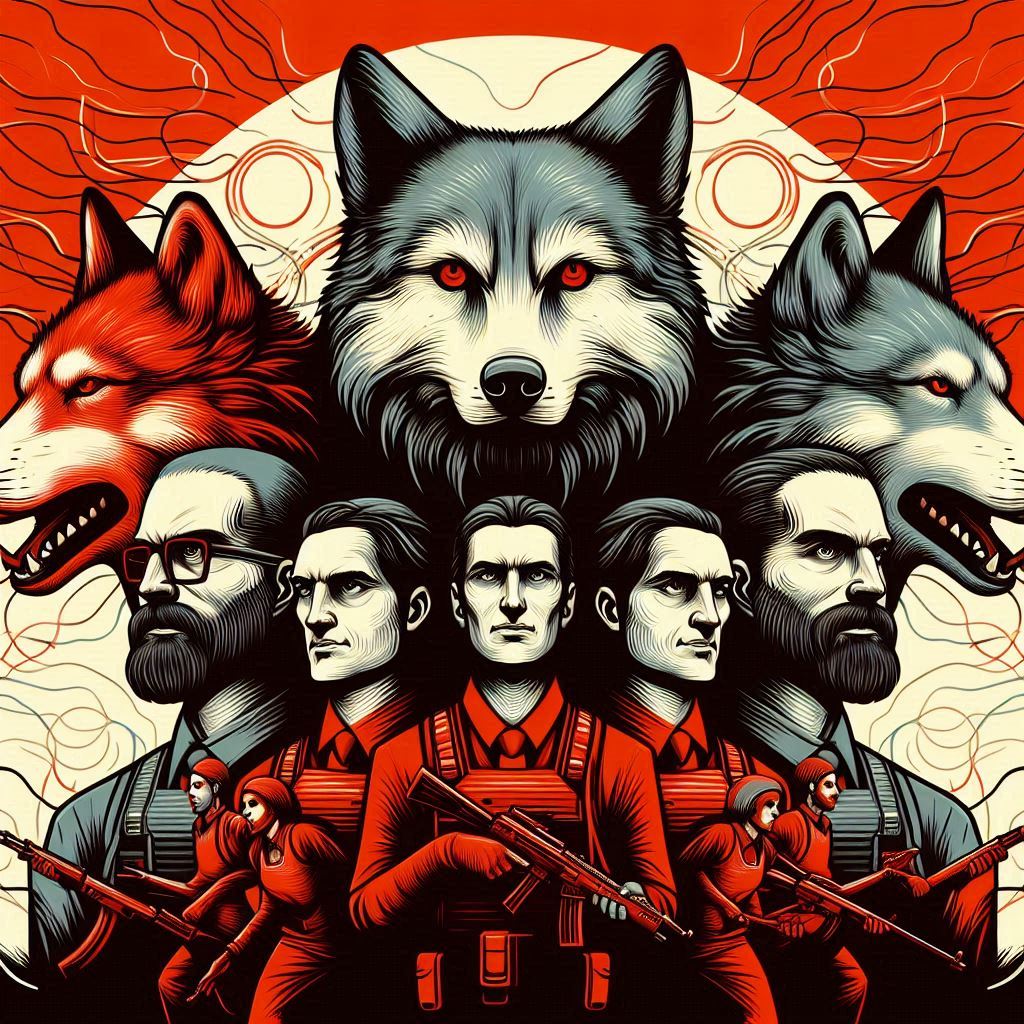Beliefs That Shape Our Work Culture
Beliefs and attitudes at work affect how we interact with colleagues, handle challenges, and approach success. These principles form the basis of a company’s work culture. Whether it’s teamwork, innovation, or individual empowerment, these values influence how employees behave and perform. Understanding these beliefs is crucial for creating a positive and productive work environment for all. Let’s look at some of these beliefs and their impact on the workplace.
What Are Beliefs?
Organizational culture beliefs shape employee behavior. They impact how employees work, interact, and interpret the organization’s goals. These beliefs can create a positive or negative work environment. Leaders play a crucial role in shaping the work feel. They guide decision-making and model expected behavior. Teams also contribute to the work feel by fostering collaboration and communication.
To create a positive work feel, prioritize psychological safety, align with the organization’s vision, and invest in recognition. Addressing dominant beliefs ensures a conducive work environment for productivity and well-being.
How Beliefs Impact Our Office Vibes

Personal beliefs and attitudes have a big impact on the office atmosphere. They affect how employees see their work environment and how they behave towards colleagues and superiors.
Positive beliefs and attitudes can create a more harmonious and collaborative workspace. Negative beliefs and attitudes may lead to tension and conflict.
Leaders and team dynamics influence the work environment based on their beliefs and values. When leaders show and encourage positive values like integrity, respect, and inclusivity, it affects the whole organization. Positive team dynamics can also foster a more cohesive and supportive work atmosphere.
Individuals and teams can work together to create a positive and inclusive office culture by fostering open communication, mutual respect, and a sense of belonging. Organizing team-building activities, sharing common goals and values, and establishing clear communication channels can help align individual beliefs and values, ultimately creating a more unified and positive work environment.
Big Ideas That Push Us at Work

Beliefs shape the vibe in the workplace. They affect how employees respond to situations and make decisions. Strong core beliefs can guide employees in understanding desired behaviors, leading to a more cohesive work environment.
Creating a positive work environment involves aligning values and behaviors, showing appreciation for employees’ efforts, and fostering trust among team members. These moves significantly contribute to a healthier and more productive workplace.
Teamwork, integrity, and psychological safety are crucial influences on how employees work together. They impact the organization’s effectiveness and success.
The Pieces That Build Our Work Beliefs
What We Think is Cool or Lame

Employees think clear communication, mutual respect, and recognition are important at work. These things help create a positive culture and make employees happy and productive.
Employees feel good and keep doing great work when they get regular feedback and recognition.
But when there’s not enough transparency, too much micromanagement, and a culture of blame, it can create a bad work environment. This can make employees feel unsupported and unhappy, leading to them leaving their jobs.
So, what the company values and believes in has a big impact on what employees see as good or bad in the workplace.
Boss Level: Who’s in Charge?

A strong leader in the workplace has qualities like effective communication, empathy, accountability, and decisiveness.
For example, clear and open communication fosters trust and understanding among the team. An empathetic leader genuinely cares for their employees’ well-being and creates a supportive work environment. Moreover, taking responsibility for actions and decisions sets a positive example for the team.
Leaders can motivate and inspire their team by setting clear vision and goals, providing growth opportunities, and recognizing employees’ efforts. Offering training and skill development programs, for instance, creates a motivated workforce.
Acknowledging and rewarding employees for their hard work also boosts morale and encourages productivity.
In the workplace, team players and lone wolves have different dynamics. Team players collaborate, communicate, and work well with others, positively contributing to group projects and goals. On the other hand, lone wolves may prefer independent work, leading to decreased teamwork and communication. However, effective leadership and team-building efforts can contribute to the organization’s success.
Get It Done Now or Take It Slow?

The way tasks and projects are approached can have a big impact on a team or organization.
Choosing to work quickly could lead to fast results, mistakes, and burnout.
Alternatively, a methodical approach allows for careful planning and execution but might cause delays.
The chosen approach should match the organization’s culture and values.
For example, a company focused on innovation may benefit from a quick approach, while a company that values quality may do better with a slower pace.
Leaders should weigh the pros and cons of each approach, considering the project, team, and outcomes.
Team Players vs. Lone Wolves

Team players in the workplace work together with a focus on cooperation, mutual support, and shared success. They value open communication, respect for others’ opinions, and actively contribute to group efforts. On the other hand, lone wolves prefer to work independently, showcasing their individual skills, and often compete instead of collaborating with colleagues.
A team of team players can foster a positive work environment with increased creativity, stronger interpersonal relationships, and better team cohesion. Conversely, a team of lone wolves may face challenges in teamwork, as individualism may hinder team morale and cohesion, leading to communication breakdowns and a lack of collaboration. Balancing team players and lone wolves involves recognizing the strengths of each approach and using them to create a diverse and dynamic team culture.
This includes promoting a positive collaborative mindset while valuing individual contributions and creating opportunities for personal growth. Achieving this balance can result in a team combining individual talent and collective effort while propelling the organization toward success.
Different Teams, Different Vibes

Different teams in the workplace often have different beliefs, which impact the overall vibe of the team. For example, teams that value open communication tend to have a relaxed and collaborative atmosphere. On the other hand, teams with a more hierarchical belief system may have a structured and formal vibe.
To create a positive office spirit in diverse teams, leaders should encourage open and honest communication, promote teamwork and collaboration, and recognize and appreciate the contributions of all team members. Understanding and respecting each team’s unique values and beliefs can also contribute to a positive work environment.
Key factors that contribute to the unique feel of different teams include the organization’s values, degree of hierarchy, urgency, people orientation, task orientation, and functional orientation. These factors shape the team’s culture and influence the behavior and interactions of its members.
How Leaders and Teams Shape Our Work Feel
How We Get Comfy with Our Work Ways
Individuals form their beliefs and attitudes about work from upbringing, education, and personal experiences. Organizational culture and top management’s communication also influence these beliefs. Peers and colleagues significantly impact a person’s work environment and team dynamics.
Values, hierarchy, urgency, people orientation, and functional orientation shape an organization’s work environment and team dynamics. Aligning values, building trust, promoting teamwork, and nurturing psychological safety are essential for creating a positive work atmosphere. Appreciation, resilience, and alignment with the company’s vision and goals are crucial for maintaining a positive work environment.
Tips to Keep Our Work Feels Going Strong
Maintaining a positive work vibe and motivation are essential for productivity and well-being.
One effective strategy is creating strong organizational beliefs and attitudes that align with the company’s vision and goals. This helps employees understand expectations and feel rewarded for upholding these values.
Leaders and teams can contribute to shaping a positive work environment by modeling desired behaviors, providing clear communication, and recognizing and appreciating the efforts of their team members.
Fostering a culture of trust, integrity, and teamwork can promote well-being, productivity, and retention, ultimately leading to company success.
For example, companies like Microsoft and Salesforce have credited their success in part to prioritizing a positive organizational culture, which has led to revenue and stock growth.
Power Moves to Create Our Work Feels
Finding the Right Squad
Selecting the right squad to work with involves considering important qualities and values. These include alignment, appreciation, trust, performance, resilience, teamwork, integrity, innovation, and psychological safety. These qualities contribute to the creation of a supportive and engaging team culture.
The dynamics of the team significantly impact work performance and overall satisfaction. A cohesive team with positive dynamics tends to improve productivity, employee well-being, and retention.
Understanding the organization’s cultural beliefs—values, degree of hierarchy, degree of urgency, people orientation or task orientation, and functional orientation—are important factors in building a cohesive and effective team. Fostering continuous alignment with the company’s vision, purpose, and goals is also important.
Prioritizing these factors can help organizations create a positive and productive work environment, which contributes to the company’s success.
Welcome to the Team Shindig
The “Welcome to the Team Shindig” focuses on the core beliefs that shape the team’s work vibe. It highlights values, attitudes, and rules that influence employee behavior. The paragraph also emphasizes the significant role of team leaders and members in impacting the overall feel of the work environment. They contribute to the creation and sustenance of a positive organizational culture.
Furthermore, it provides practical insights on how to keep the office spirit strong and positive. This includes excelling in recognition, fostering continuous alignment with the company’s vision, purpose, and goals, and prioritizing qualities such as alignment, appreciation, trust, performance, resilience, teamwork, integrity, innovation, and psychological safety.
High-Fives and Gold Stars for Wins
High-fives and gold stars make employees feel recognized and appreciated for their efforts. This creates a culture of celebration and motivates individuals to excel in their roles. It boosts morale and productivity, creating a supportive atmosphere that encourages excellence. Acknowledging wins also reinforces organizational values and priorities, aligning employees’ behaviors with cultural expectations.
This practice is crucial in shaping a positive work environment, driving engagement, and contributing to the company’s success.
Helping Each Other Do Better
In organizations, individuals can help their colleagues by:
- Providing constructive feedback
- Recognizing their accomplishments
- Offering assistance when needed
This creates a positive work environment where all employees can thrive. Leaders and teams can collaborate by:
- Setting common goals
- Fostering open communication
- Promoting continuous learning
These strategies encourage and empower each other, contributing to the organization’s success and growth.
Chatty Cathy or Quiet Quentin: Talking at Work
Chatty Cathy and Quiet Quentin’s communication styles significantly impact the office.
Chatty Cathy brings energy with her extroverted and talkative nature, while Quiet Quentin brings a calm and focused atmosphere with his reserved approach.
Working with Chatty Cathy may mean dealing with distractions and dominating conversations, but it also means more social interaction and better team morale.
On the other hand, working with Quiet Quentin may make understanding his thoughts and feelings challenging, but it also creates an environment for deep work and independent tasks.
Strategies like active listening, encouraging verbal and written input, recognizing individual styles, and open dialogue about preferences and boundaries can improve communication and collaboration between them.
These strategies create a balanced and inclusive work environment where both communication styles are valued for the team’s success.
Awesome Ways to Pump Up Our Office Spirit
Gold Star Tactics
Creating a positive office vibe can be achieved through various tactics.
Encouraging open communication, recognizing and appreciating employees’ efforts, and promoting teamwork are essential strategies.
It involves creating an inclusive and supportive work environment where employees feel valued and respected.
Leaders and teams can shape the work environment by setting clear expectations, leading by example, and fostering a culture of trust and transparency.
Promoting a shared vision and purpose, empowering employees to make decisions, and providing continuous learning and development opportunities are power moves to create a strong work culture and team spirit.
Prioritizing employee well-being, promoting work-life balance, and recognizing achievements contribute to a positive and strong organizational culture.
These tactics can increase productivity, satisfaction, and retention among employees, ultimately driving the organization’s success.
Team Ideas are Gold
Team beliefs can greatly affect the atmosphere in the workplace. When a company’s culture is based on strong beliefs, it creates a positive and collaborative environment. This can lead to teamwork, creativity, and strong performance among employees.
Key steps to foster a strong team atmosphere include aligning core values, promoting appreciation and trust, and encouraging innovative thinking. Leaders and teams should also continuously align with the company’s vision, purpose, and goals. This can help improve resilience and psychological safety among employees, resulting in a more positive and productive work environment.
Leaders’ and teams’ involvement in shaping the work atmosphere is crucial. Leaders play a significant role in shaping and sustaining organizational culture. Mergers and acquisitions and the company’s hierarchy, urgency, and orientation can influence the organization’s culture. Values and beliefs impact decision-making and behavior within an organization, and leaders and teams should be mindful of these influences to drive more productive behavior.
Bosses Who Cheer Us On
Bosses can greatly impact how their team feels and how much work they get done. When bosses support and encourage their employees, it creates a positive and motivating atmosphere. This can make people happier at work, more satisfied with their jobs, and more productive. Also, when bosses show real interest and praise for their team’s work, employees are more engaged and committed to reaching the company’s goals.
Supportive bosses can show they care in different ways, like giving regular feedback, acknowledging achievements, and providing growth opportunities. They can also have open and honest communication so team members feel listened to and appreciated. These actions help create a positive work environment by boosting employee confidence, promoting good teamwork, and ultimately leading to success in the organization.
Believing in Our Team Badge
Believing in our team badge means embracing the values and expectations set by top management. It involves understanding the desired response to different situations and having faith in the correctness of that response. Demonstrating the organization’s values will be rewarded. These beliefs shape the organizational culture, influence employee behavior, and impact the work environment.
To build and maintain a strong belief in our team badge, prioritize effective communication, continuous education, and presenting evidence that supports the organization’s values and expected responses. Leaders play a crucial role in shaping and sustaining organizational culture. Their behavior heavily influences employees’ beliefs in the team badge. By fostering a positive work environment, leaders can contribute to a strong belief in the team badge and drive more productive behavior within the organization.
Buddy System: Being Friends at Work
The buddy system at work is important because it can help build a positive work environment. It fosters camaraderie, collaboration, and support among colleagues. When coworkers form strong friendships, they can engage in team-building activities, offer encouragement during challenging times, and enhance communication and trust within the team.
Being friends at work can benefit individual and team performance. It improves morale, increases job satisfaction, and promotes a sense of belonging and loyalty to the organization. Additionally, friendships at work can lead to higher levels of cooperation, better problem-solving abilities, and a more cohesive and productive work environment.
Learning is Winning
Beliefs are really important at work. Employees who share beliefs and values can work well together and be more productive.
For example, if everyone believes in teamwork, they can create a supportive work culture and achieve shared goals. Leaders also play a big part in this. They show and encourage the organization’s values, making employees feel valued and motivated. In successful companies like Microsoft and Salesforce, leaders have created a culture of collaboration and respect, which has boosted productivity and made employees happier.
Day One: Make It Count
The office vibes on day one are shaped by the organization’s values, expectations, and goals. These beliefs influence how employees respond to situations, make decisions, and interact with each other, ultimately shaping the organizational culture.
Leaders and teams influence work feelings and productivity by modeling the organization’s values, providing clear expectations, and promoting a positive and supportive work environment.
Demonstrating teamwork, open communication, and a focus on common goals can foster a strong team spirit and camaraderie on day one, enhancing employee collaboration and unity. These power moves set a positive tone for new employees and contribute to a healthy and productive organizational culture.
The Special Touch for Each Teammate
It is important to recognize each teammate’s unique skills and strengths. We can do this by regularly acknowledging and praising their contributions. This helps teammates feel valued and recognized.
Implementing mentorship programs or skill-sharing sessions can also help peers learn from each other and appreciate each other’s strengths.
To support teammates, team leaders can actively listen to their concerns, provide opportunities for professional growth, and offer regular feedback and recognition.
Creating a culture of open communication and transparency can foster a sense of belonging and support within the team.
Promoting team-building activities, such as collaboration on projects or social events, can foster camaraderie and inclusion.
Encouraging mutual respect, celebrating team successes, and fostering a culture of inclusivity can help each teammate feel like an integral part of the team.
The Big Q’s on How We Work Together
Beliefs can greatly impact office culture and employee behavior. When everyone shares common beliefs about the organization’s values and expected responses, it creates a positive work environment. These beliefs help guide decision-making and behavior, influencing the office atmosphere. Strong organizational beliefs can also boost employee motivation and commitment.
The core values, hierarchy level, sense of urgency, and people or task orientation are key ideas that drive individuals at work. These ideas shape employees’ work experiences and impact the organizational culture. When employees are aligned with these key ideas, they tend to be more productive and engaged.
Leaders and teams have a key role in shaping the office environment. They can influence the organization’s culture and beliefs through their actions and communication. Effective leaders create a positive work environment by promoting the organization’s values and demonstrating expected behaviors. They also help guide teams to align with the company’s vision and goals, ultimately impacting the overall work atmosphere.

Vizologi is a revolutionary AI-generated business strategy tool that offers its users access to advanced features to create and refine start-up ideas quickly.
It generates limitless business ideas, gains insights on markets and competitors, and automates business plan creation.


